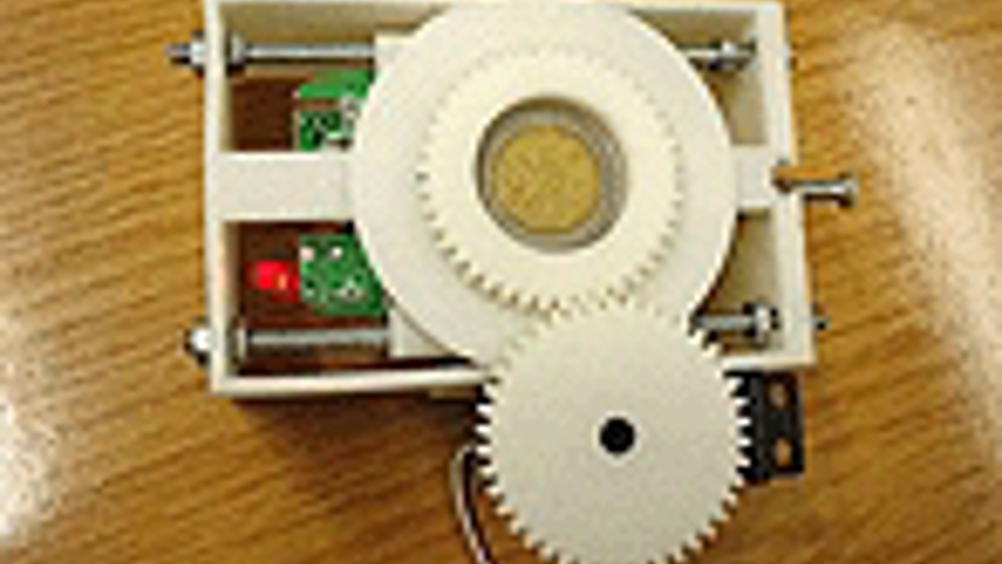Counterfeit coin detection

Sensors used in some optical mice to guide curser movement could also be used to cheaply detect counterfeit euros, according to research published by the University of Lleida (UdL).
Researchers at UdL conducted tests to establish the effectiveness of a prototype device by rotating a €2 coin a few millimeters away from the sensor.
The sensor then captured the images from the common face of the coins and compared it to images obtained from genuine coins using algorithm developed by the team.
Marcel Tresanchez, a researchers at UdL, said: ‘The same operation could be performed with a webcam, for example, but the advantage of these sensors is their small size, low cost and the angle of vision reduced to such an extent that the raised image of coins can easily be captured.’
Tresanchez said that infrared or LED-based sensors would work better than laser technologies due to the size of the images captured. He added that these images need to be taken in real time with a minimum resolution of 15x15 pixels.
Register now to continue reading
Thanks for visiting The Engineer. You’ve now reached your monthly limit of news stories. Register for free to unlock unlimited access to all of our news coverage, as well as premium content including opinion, in-depth features and special reports.
Benefits of registering
-
In-depth insights and coverage of key emerging trends
-
Unrestricted access to special reports throughout the year
-
Daily technology news delivered straight to your inbox










UK Enters ‘Golden Age of Nuclear’
The delay (nearly 8 years) in getting approval for the Rolls-Royce SMR is most worrying. Signifies a torpid and expensive system that is quite onerous...